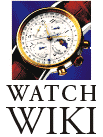 |
Brand: | Seiko, Suwa Seikosha | 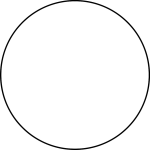
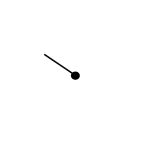
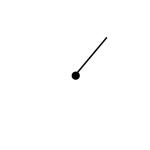
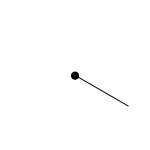
|
|---|---|---|---|
| Family: | |||
| Height: | 5.30 mm | ||
| Jewels: | |||
| Reserve: | hours | ||
| Frequency: | 16,384 Hz | ||
| Winding: | Battery | ||
| Diameter: | 25.60 mm (11.5 ligne) | ||
| Complications: | Hacking Seconds | ||
| Hands: | Central Hour Hand, Central Minute Hand, Central Seconds Hand | ||
| Distinguishing Technical Characteristics | |||||||||||
|---|---|---|---|---|---|---|---|---|---|---|---|
| Production: 1976 – 1976 | |||||||||||
| 1910s | 1920s | 1930s | 1940s | 1950s | 1960s | 1970s | 1980s | 1990s | 2000s | 2010s | 2020s |
Cal. 3870A was a quartz pocket watch movement. It was produced by Suwa Seikosha in 1976 and was used in Seiko’s first railway pocket watch with the name 38RW. Similar movements include Cal. 3800A and Cal. 3862A, a similarly late, low-end member of the family.
This was an unusual movement in the Cal. 38 line in that it was produced in extremely small numbers and was never featured in Seiko catalogs. It lacks the thermocompensation circuit seen in higher models and uses a simple condenser block adjustment mechanism rather than the 9-step or variable adjusters. This meant accuracy was worse than the similar Cal. 3823A at 10 seconds per month. Yet this was still far more accurate than a contemporary mechanical chronometer. Seiko produced 13 different adjuster blocks but these are likely impossible to find, making it impossible to regulate an original Cal. 3870A movement.
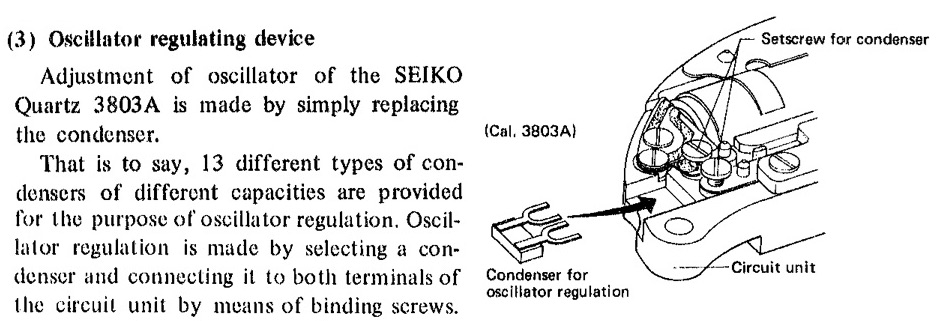
It uses a 16 KHz crystal, despite being produced when Seiko had implemented 32 KHz crystals in this movement family. It also lacked the variable adjuster used in other contemporary models.
Cal. 3870A Applications
Cal. 3870A was only used in the limited-production 1976 QYE010 (3870-0010) railway watch.
Although the QYE010 (3870-0010) railway watch was not adopted by the Japanese National Railway and did not sell well, a successor was produced in 1978. QHV010 used Cal. 7550 (75RW) which was less accurate (15 seconds per month rather than 10) but was adopted by the railway.
Suwa Seikosha 38 Stream Overview
Seiko’s Cal. 38 series was the first volume-production quartz movement family from Seiko. The architecture and design set the template for all future quartz movements, and it was the premier product that pushed Seiko to the top of the watch industry in the 1970s. Cal. 38 movements were positioned in the mid-range to superior market segments, including the “QT”, “QR”, “SQ VFA”, and “GFA Superior” lines.
Seiko was quietly racing to develop a quartz watch movement in the 1960s, and delivered their first Cal. 35 movement to the Neuchatel Observatory in late 1967, just a few months after the CEH delivered their “Beta” quartz movement prototypes. A product of Suwa Seikosha, Cal. 35A used a 8,192 Hz of 16,384 Hz quartz crystal and an integrated circuit from Intersil in the USA. Seiko offered Cal. 35 SQ for sale in the Seiko Astron watch on Christmas Day, 1969, with 100 examples sold in the first month. Suwa rival Daini Seikosha developed their own movement, Cal. 36, and launched it in 1970, but neither movement was truly produced in volume.
Cal. 380x were the lower-end movements but were still accurate to 2 minutes per year. However these movements lacked any adjustment beyond replacement of the condenser block. Cal. 382x included a thermocompensation circuit and was accurate to 1 minute per year. It could be regulated using a step variable condenser. All basic movements used 7 jewels: Two each on the third wheel, sweep second wheel, and step rotor, and another used on the seconds hand finger.
Suwa Seikosha 38 Stream Technology
Suwa Seikosha developed Cal. 38 as a full-production midrange to high-end quartz movement, and it incorporates many features that now seem commonplace but were groundbreaking at the time. The quartz crystal oscillated at 16,384 Hz and it used a CMOS integrated circuit to reduce battery consumption, though later examples used a 32 KHz crystal. The hands were operated by a stepper motor and a jeweled backlash pin ensured a smooth dead beat seconds hand. The earliest examples were sold as “VFA” (“Very Fine Adjustment”) and were adjusted for temperature and in 6 positions.
Early examples of Cal. 3823 use a large 16 KHz quartz tube and unusual “step variable condenser” regulation system using multiple contacts for variable resistance. The design was evolved over time to use a more integrated quartz module and smaller ICs as technology advanced. The final Cal. 3823A had a small 32 KHz quartz tube and modern screw-type trimmer condenser for adjustment. The circuit block and crystal oscillator were also combined in later examples. These components could be retrofitted to earlier movements, and many were during service. 16 KHz examples are rare today.
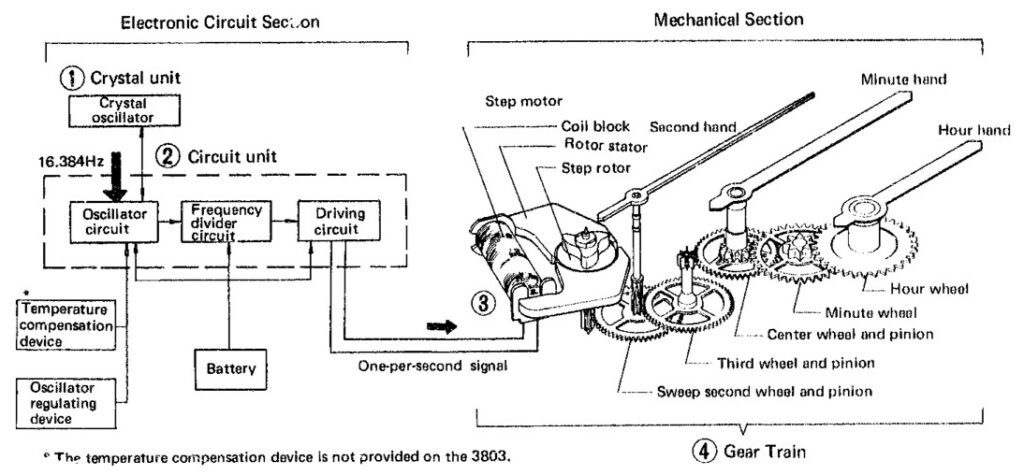
These movements were produced in larger volume but were still quite high-end compared to mass-market quartz watches later in the 1970s.
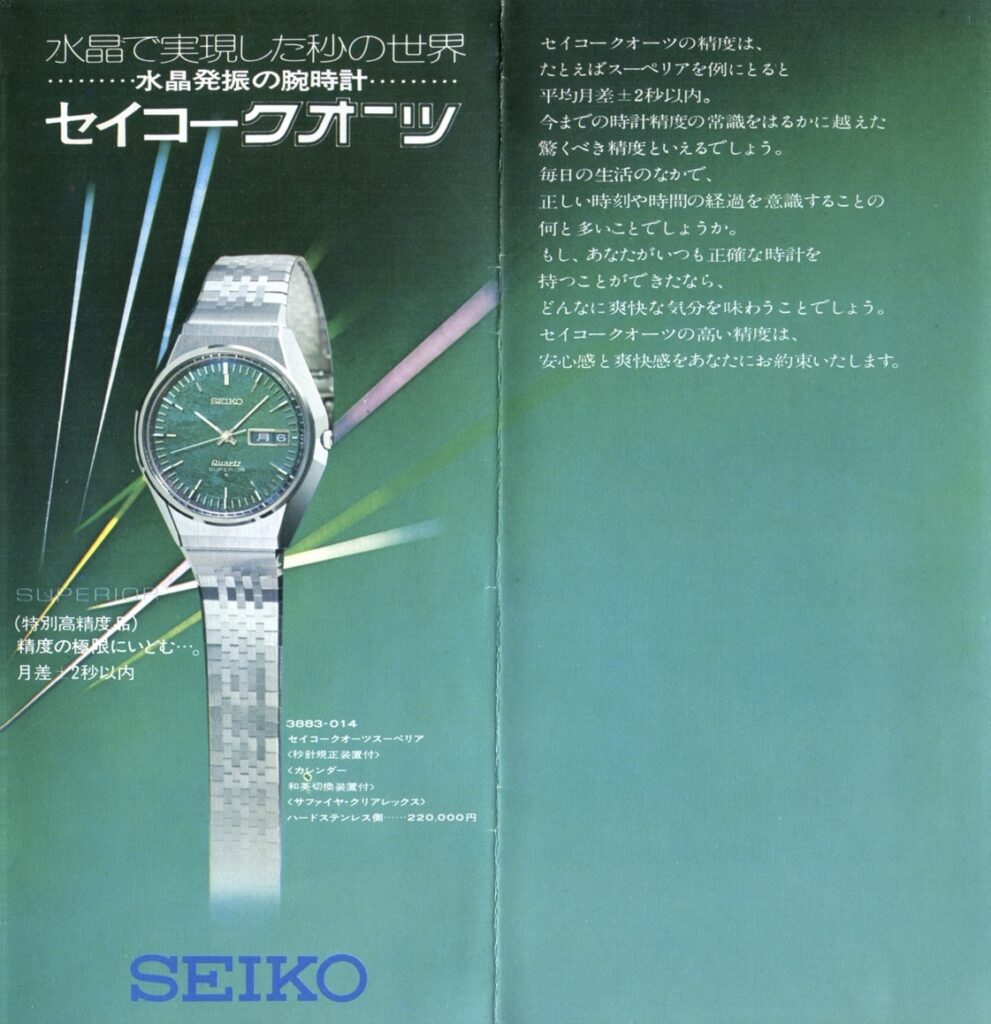
Suwa Seikosha 38 Stream Family

All 38×3 movements were branded “38SQW” or “38QTW” and included day and date. Cal. 38×2 is branded “38QTC” and is date-only. Cal. 38×0 was branded “38SQ” and lacks the calendar function.
One unusual (and rare) version is Cal. 3819A, used in “38DQC” models called Dual-Zone Timer. This was Seiko’s first GMT quartz watch. Even rare is Cal. 3870A, a time-only version used as “38RW” in Seiko’s first quartz railway watch, model QYE010 (3870-0010).
| Line | Time-Only | Date | Day/Date | Successor |
|---|---|---|---|---|
| QR | 3862 38QRC | 3863 38QRW | 084 “Lord Quartz” | |
| QT | 3800 38QT | 3802 38QTC | 3803 38QTW | 085 “King Quartz” |
| SQ (VFA) | 3820 38SQ | 3823 38SQW | 48 “Grand Quartz” | |
| GFA Superior | 3882 | 3883 | 48 “Superior” | |
| Dual-Zone Timer | 3819 38DQC | |||
| Railway | 3870 38RW |
The 38SQ “VFA” line was replaced by the 48GQ “Grand Quartz” and 48SQ “Superior” line. The 38QT “QT” line was replaced by the 08KQ “King Quartz”, 38QR “Lord Quartz”, and 08QT line. The QR line of watches were replaced by the cheaper “Type II” models.
Images are taken from official publications and are used here for commentary and educational purposes. Copyright is held by the original owner as noted.